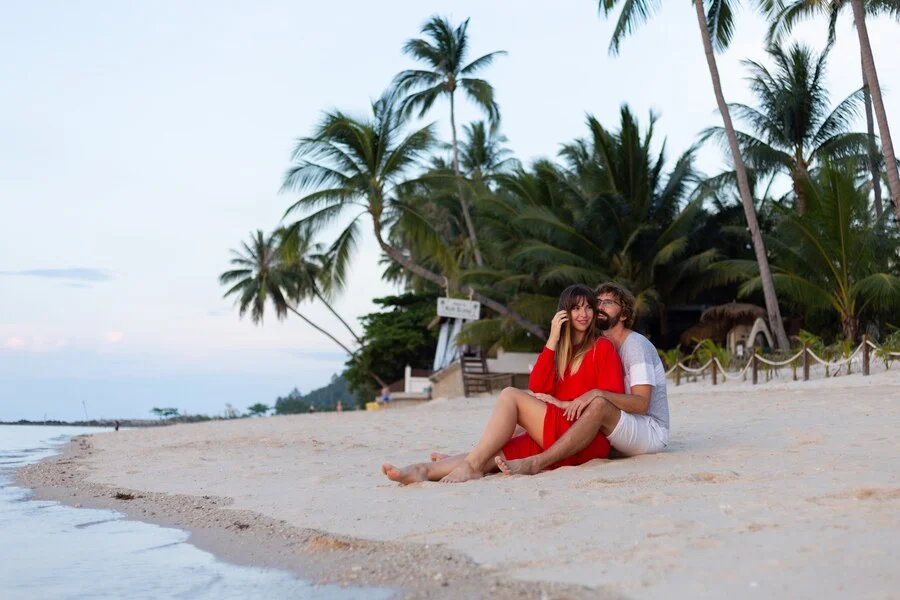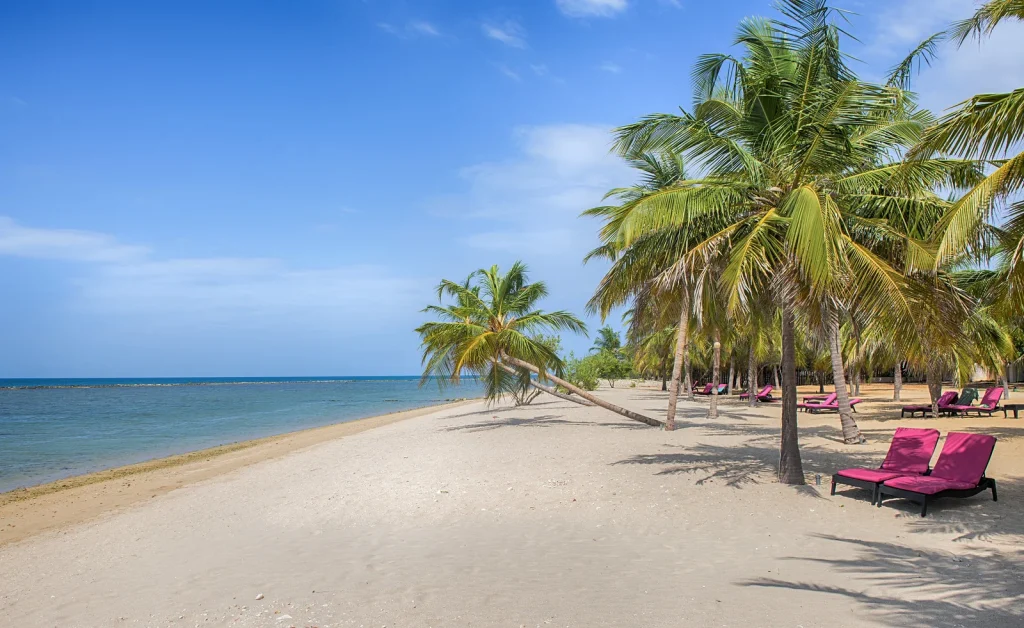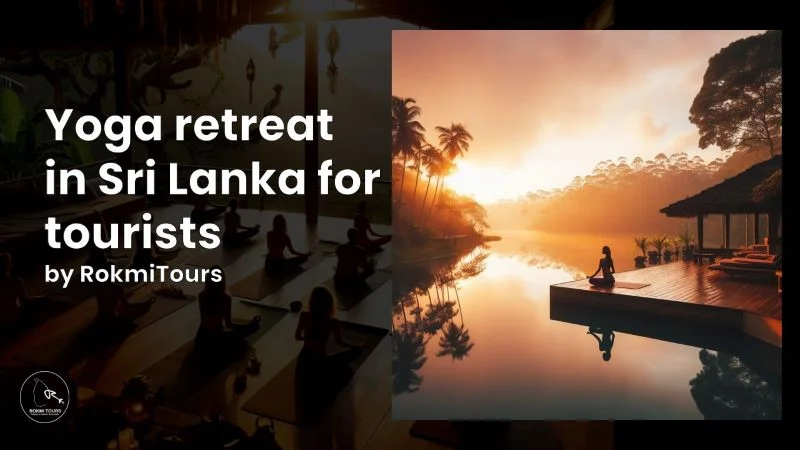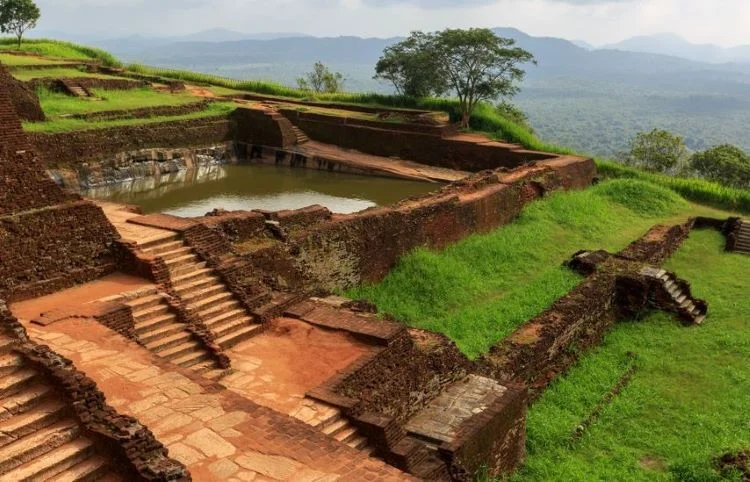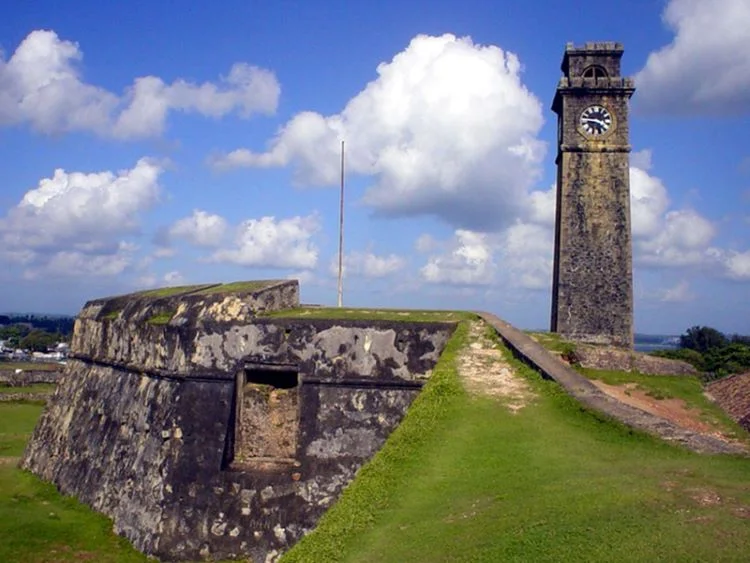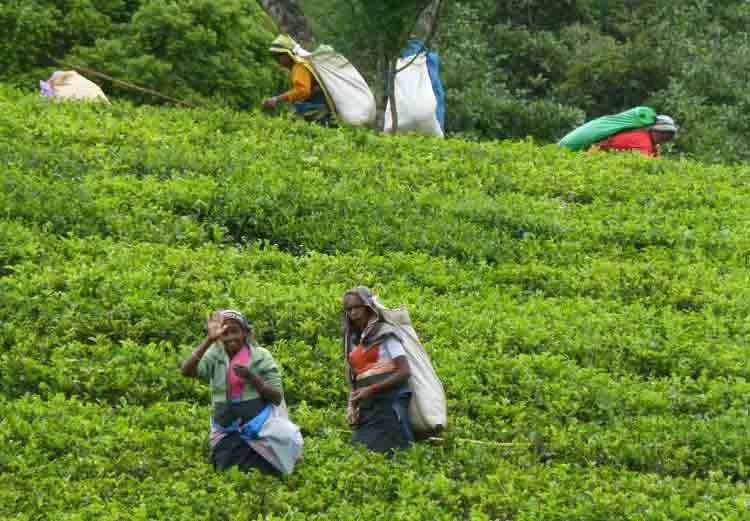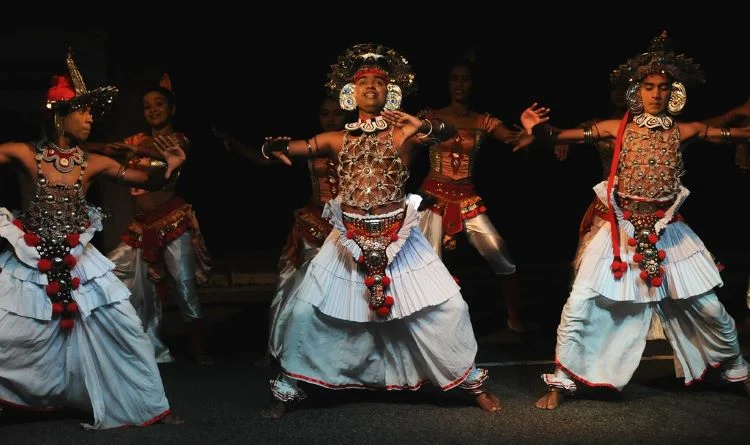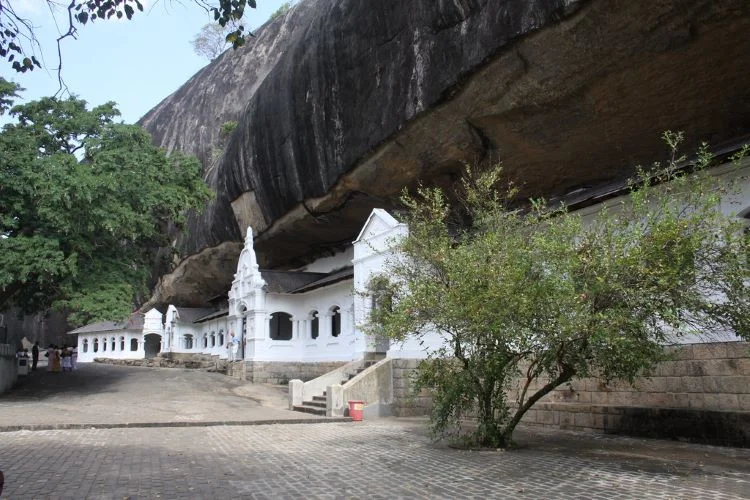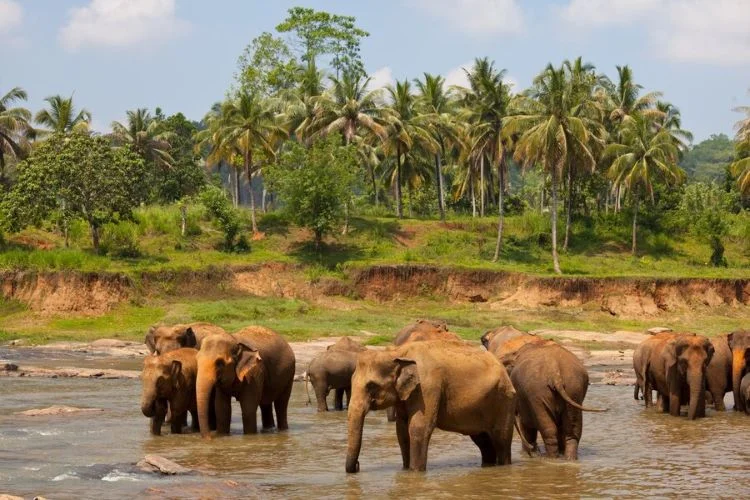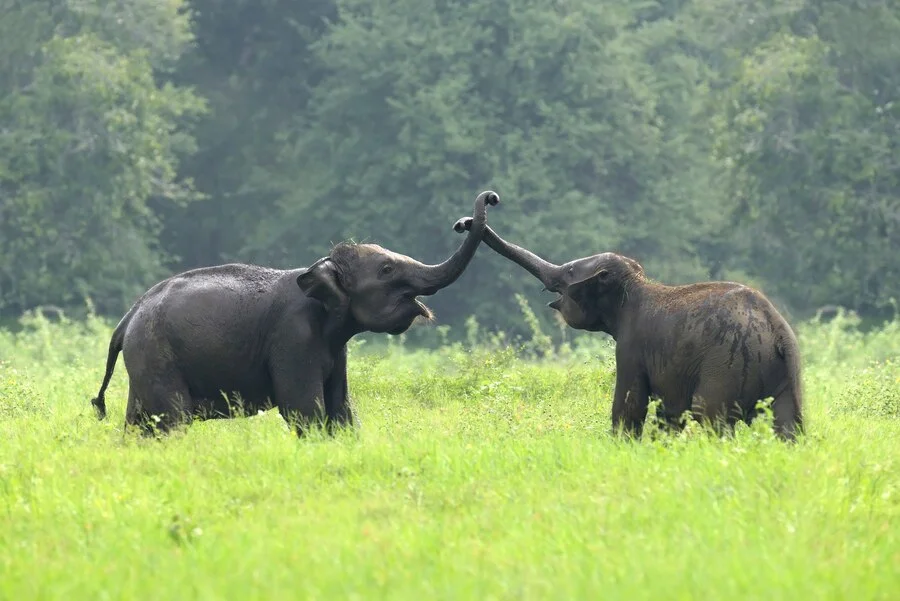
About Sri Lanka
- Post author:Rokmi Tours
- Post published:February 6, 2023
- Post category:Travel
- Post comments:0 Comments
Facts and Figures
About Sri Lanka: South of the Indian subcontinent is the island nation of Sri Lanka. Its Eastern longitudes are 79.42′ and 81.52′, and it is located between latitudes 5.55′ and 9.55′ North of the equator. Incredible variety can be found throughout the 65,610 sq km of land. Beautiful tropical beaches, lush vegetation, historic monuments, and countless other delights are all contained within the 445 km long and 225 km wide area. A mountainous mass with a height of more than 2,500 meters, located somewhat south of the island’s center, is surrounded by wide plains. The island is surrounded by beaches with palm trees, and the sea rarely drops below 27 C.
The Land
The Palk Strait, which at its narrowest point is between Rameswaram in India and the Jaffna Peninsula and is less than 80 km wide, separates Sri Lanka from India, which is located 10 degrees north of the equator. Rameswaram, in India, and Mannar Island, off the northwestern coast of Sri Lanka, are only separated by a short 32 km of water.
There is evidence of a natural land bridge here that once connected India and Sri Lanka, and this causeway, which is now gone, was once called Adam’s Bridge and was located just a few meters below sea level. Due to Sri Lanka’s proximity to the subcontinent, its history and ecology have always been subject to significant influences from its larger neighbor.
Climate and Seasons
The tropical climate of Sri Lanka, which is only 640 kilometers north of the equator, has little seasonal temperature variation. The average temperature inland, however, is much colder on average than it is along the coast, where it averages between 26 and 28 C, with 27 point 5 C as the capital. The South-West monsoon, which lasts from May to September, raises heavy seas that are unattractive for swimming and diving as well as drops a lot of rain on the South-West coasts, from Colombo to Galle. The monsoon’s worst intensity occurs from November to February, but most tourists won’t be significantly impacted by this because the majority of the top tourist destinations are located in the South and the central hills. Localized thunderstorms can happen at any time of the year, and despite the fact that they are frequently intense, they rarely last more than a few hours.
The average temperature in Colombo, which is located in the lowlands, is 27 C. Temperatures can drop to 16 C at an altitude of almost 2,000 meters in the higher elevations, making it feel quite cool. Climate-wise, Sri Lanka has no off-season; bright, sunny, warm days are the norm and occur frequently even during the height of the monsoon. While the North-East monsoon rain falls in the Northern and Eastern regions of the island in December and January, the South-West monsoon primarily brings rain to the Western, Southern, and Central regions of the island from May to July.
History
Recent excavations show that even during the Neolithic Age, there were food gatherers and rice cultivators in Sri Lanka. Very little is known of this period; documented history began with the arrival of the Aryans from North India. The Aryans introduced the use of iron and an advanced form of agriculture and irrigation. They also introduced the art of government. Of the Aryan settlements, Anuradhapura grew in to a powerful kingdom under the rule of King Pandukabhaya. According to traditional history he is accepted as the founder of Anuradhapura.
During the reign of King Devanampiya Tissa, a descendant of Pandukabhaya, Buddhism was introduced in 247 B.C. by Arahat Mahinda, the son of Emperor Asoka of India. This is the most important event in Sri Lankan history as it set the country on the road to cultural greatness. As a new civilization flourished Sri Lanka became rich and prosperous.
In the mid 2nd century B.C. a large part of north Sri Lanka came under the rule of an invader from South India. From the beginning of the Christian era and up to the end of the 4th century A.D. Sri Lanka was governed by an unbroken dynasty called Lambakarna, which paid great attention to the development of irrigation. A great king of this dynasty, Mahasen started the construction of large ‘tanks’ or irrigation reservoirs. Another great ‘tank’ builder was Dhatusena, who was put to death by his son Kasyapa who made Sigiriya a royal city with his fortress capital on the summit of the rock.
As a result of invasions from South India the Kingdom of Anuradhapura fell by the end of the 10th century A.D. Vijayabahu (I) repulsed the attack and established his capital at Polonnaruwa in the 11th century A.D. Other great kings of Polonnaruwa were Parakramabahu the Great and Nissanka Malla both of whom adorned the city with numerous buildings of architectural beauty.
Invasion was intermittent and the capital was moved constantly until the Portuguese arrived in 1505, when the chief city was established at Kotte, in the Western lowlands. The Portuguese came to trade in spices but stayed to rule until 1656 in the coastal regions, as did the Dutch thereafter. The Dutch rule lasted from 1656 to 1796, in which year they were displaced by the British. During this period the highland Kingdom, with its capital in Kandy, retained its independence despite repeated assaults by foreign powers who ruled the rest of the country. In 1815 the whole island came under British power when the last Sinhalese King Keerthi Sri Wickrama Rajasinghe was captured. Modern communications, Western medical services, education in English, as well as the plantation industry developed during the British rule. By a process of peaceful, constitutional evolution, Sri Lanka won back her independence in 1948 and is now a sovereign republic, with membership in the Commonwealth of Nations and the United Nations Organization.
Government and Economy
Declared a republic in 1972, 14 years after independence, Sri Lanka has opted to stay within the British Commonwealth and maintains close links with Britain and with other Commonwealth member countries, especially those in Asia. The president, the prime minister and the single-house parliament are elected for a six-year term. With the power to dissolve parliament and appoint or dismiss cabinet ministers and the prime minister, the president is the real head of state, not merely a ceremonial leader.
Language
Language has been a contentious issue in Sri Lanka. In the 1970s, Sinhalese demagogues promoted efforts to make Sinhala – the language of the Sinhalese majority – the sole language of education, administration and government. This was perceived by the Tamil minority as a deliberate move to keep Tamils out of government and exclude them from further education, and was a major cause of the discontent that eventually erupted into inter-communal violence. Subsequently, a compromise was reached in an attempt to satisfy both the disgruntled Tamil community and hard-line Sinhalese nationalists. Tamil and Sinhala are ranked equally as “national” languages. Tamil which is also the largest language group in Southern India and the main language of Tamil Nadu, the Indian state closest to Sri Lanka – is the mother tongue of about 20 percent of the population in total, including both northern and hill-country ‘Indian’ Tamil communities, while Sinhala is the first language of the Sinhalese majority.
Meanwhile, English is still almost universally spoken by educated people of all communities, and is the language with which Sri Lanka communicates with the outside world. Despite being the language of the former colonial power, English is also politically neutral. Most of the people you are likely to encounter in shops, hotels, restaurants and when travelling on public transport are likely to speak enough English for you to get by. Taxi drivers usually speak some English, and bus and railway personnel are usually quite fluent. Out in the country side, English may be less widely spoken, though it is rare to find yourself completely unable to communicate.
The Arts
Sri Lankan visual arts, architecture, literature, music and dance, all bear the stamp of the country’s centuries-old Buddhist culture. Poetry, as well as music and dance, were almost entirely ceremonial and devotional until well after the fall of the Kandyan Kingdom to the British, but by the mid-19th century Sri Lanka was being opened up to outside cultural influences by the advent of the printing press. However, a strongly conservative Buddhist tradition has not provided fierce political repression which followed the leftist revolts of 1971 and 1987-88 and the ethnic troubles of the 1980s and 1990s have also made it hard for writers to write freely. That said Sri Lanka has its share of home-grown literary talent. Probably the best known of its authors is Michael Ondaatje, author of the acclaimed novel, the English Patient, which is also a popular screen picture.
Music and Dancing
Music and Dancing in Sri Lanka are still closely tied up with religious ritual. Kandy or ‘high country’ dance has evolved from village dances performed by the complex rhythms of several drummers who use a percussion instrument called the ‘gatabere’ – a wooden drum with leather heads of monkey skin at one end and cow-hide at the other, which make contrasting tones.
Dancers, usually women, go through a routine of sinuous pose and flowing arm movements. ‘Low Country’ or ‘devil-mask’ dancing is also accompanied by drummers, who use a special ‘demon drum’ to enhance the steps and movements of dancers wearing the grotesque masks which represent the 18 demons of disease. These dances were and sometimes still are performed with the intention of persuading the demon to leave the afflicted person.
Art and Architecture
The most prominent examples of Sri Lanka’s Buddhist influenced architectural heritage are at the dagobas which can be seen from one end of the country to the other. In the shape of a dome, the dagoba, usually painted white, often enshrines a relic of the Buddha, such as a hair or a tooth, and is usually massively constructed of brick covered with a coat of plaster. The pan tiled roofs and verandahs which grace many older buildings are the legacy of the Portuguese and Dutch. Galle has many fine old Dutch buildings, while in Kandy and Nuwara Eliya there are many surviving buildings from the British colonial era which would not look out of place in an English country town.
Statues of the Buddha are features of ancient temple sites, where they are often carved from the living rock of basalt crags and crafts. The Buddha may be represented standing, reclining or sitting in meditation. Frescoes like those at Sigiriya may display beautiful women, temple dancers or deities.
Sport and Recreation
Sri Lankans have triumphed internationally at athletics, among them, 2000 Olympic Games Bronze medallist sprinter Susanthika Jayasinghe and others, including Sriyani Kulawansa and Sugath Tillekaratne. But it is Cricket that is the first and true love of all Sri Lankan sport fans. When Sri Lanka, led by Arjuna Ranatunga, trounced the giants of world cricket to win the 1996 Wills Trophy in one-day internationals, there was dancing in the streets. When Sri Lanka’s team is playing in major international events the whole island is watching or listening. Players are major stars, and probably the most popular public figures in the country. Any patch of relatively flat wasteland or village square is likely to have its complement of small boys playing an improvised game and no matter how crude or aged the equipment, the players will be as deadly serious as any World Cup final team. If you are a cricket fan, you may want to watch a game at the Kettarama Stadium in North Colombo or at Asgiriya, in Kandy, where cricket is played from January to April.
Sri Lanka also abounds in water sports, with some excellent scuba diving excursions offered by qualified dive shops.
Gemstones and Rivers
Geologically, Sri Lanka is composed of gneiss, schist, granite, quartzite and crystalline limestone-an agglomerative, quartzite rich gemstone deposits, washed by streams and rivers from the central highlands in to lowland valleys. For more than 2000 years Sri Lanka has been a noted producer of rubies, sapphires, and semiprecious stones such as amethyst, alexandrite and topaz. From a coastal plain, the island rises to an area of South-Central highlands, which reach their highest point at Pidurutalagala (2524m/ 8281ft. Two major rivers flow out of the highlands – the Mahaweli, which flows North-East to reach the Indian Ocean near Trincomalee, and the Walawe, which joins the ocean near Hambantota on the South coast. A third, the Aruvi, flows out of the Northern fringes of the highlands and the dry zone which surrounds them, emptying into Palk Bay on the Northwest coast.
Harbors and Beaches
Sri Lanka’s natural harbours have made the island a magnet for mariners throughout its history, from the legendary Sindbad the Sailor to the Portuguese navigator Vasco de Gama and the others who followed in search of the untold wealth of the fabled Orient. Modern visitors are as likely to be drawn by some 1600km of sandy beaches, warm Indian Ocean waters and coral reefs.

